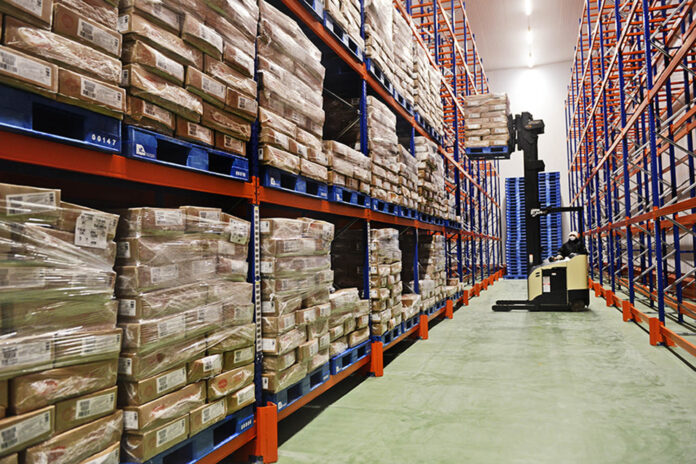-
Philippine cold chain operators have a positive general outlook on the industry despite underutilization of facilities
-
Cold chain facilities in the Philippines are not fully utilized due to the African Swine Fever outbreak, shipping issues, and the industry’s limited role in the vaccination program
-
Positive outlook stems from food sector expected to continue to be the primary expenditure item even in the “next normal”
-
Capacity increase targeted under the Philippine Cold Chain Industry Roadmap will “most likely be attained” due to projects in the finishing stages
Cold chain operators in the Philippines maintain a positive outlook on the industry despite low utilization rates of facilities.
Cold Chain Association of the Philippines (CCAP) president Anthony Dizon told PortCalls in an email the underutilization of cold chain facilities is due to the persistent African Swine Fever (ASF), which has affected food supply, and shipping issues stemming from supply chain restrictions brought about by COVID-19. The restrictions have led to a global vessel space crunch, which in turn has affected supply of containers, causing shipment delays and increased freight rates.
In a presentation at the Cold Chain Innovation Hub online policy forum on June 28, Dizon said local pork production will continue to be affected by ASF for the next 12 months.
ASF has been affecting meat production in the country since 2019, prompting the government this year to declare a state of calamity and increase the minimum access volume of pork meat imports to improve supply and stabilize prices.
Meat usually takes up 40% to 50% of the overall Philippine cold chain capacity, followed by poultry and fish, Dizon noted.
To address low utilization, Dizon said the country needs to realign its agribusiness strategies and strengthen domestically sourced food supply to reduce its dependence on imports and “insulate us from the vagaries of (the) international market.”
For the short term, Dizon said the cold chain operators are anticipating challenges such as “the potential shortfall in supply, the initial impact of which is low capacity utilization, with subsequent impact on food supply and prices as we come into the traditional holiday season.”
He added, “We can only hope that there will be mitigating circumstances that will come to play that will enable the industry to benefit from the anticipated demand surge due to the holiday season and the expected election spending.”
Positive outlook
The industry, however, retains a positive general outlook, noting that food will continue to be the primary expenditure item even in the “next normal.”
Dizon said CCAP, based on its coordination with the food processing sector, believes demand will return to pre-lockdown levels soon enough.
Moreover, the COVID-19 pandemic has taught consumers to shift to readily available food products with longer shelf life, like frozen food products, to avoid going out often and to observe health and distancing protocols.
He said such changing consumer preferences prompted by economic and availability reasons could have positive effects on the cold chain industry.
He added the need for cold chain capacity “should continue to grow as a function of population growth, economic recovery and consumption preferences, with special attention to the continuing development of e-commerce platforms.”
Dizon said, however, that for the industry to grow, it needs to be aligned with corresponding growth in production capacities and capabilities around the country, with emphasis on technology transfer/absorption, commercial farming, and partnerships among others.
Industry growth must also come with the recognition of its attendant need for power supply, environmental compliance, and logistics support, he added.
Small role in vaccination program
Dizon, meanwhile, said the current vaccination program against COVID-19 has made little impact on the utilization of cold chain facilities.
He noted industry participation in the vaccination program has so far been limited to the use of MetroPac Movers, Inc.’s warehouse for the temporary storage of vaccine shipments; the arrangements made by specific local government units with some CCAP members; and arrangements made between CCAP members and private sector entities that procured vaccines for their employees.
Asked if CCAP members have made investments for the storage of vaccines, Dizon noted that members who are already engaged in pharmaceutical distribution have invested in additional equipment needed to address prospective demands, such as ultralow temperature freezers.
“Obviously, however, the capacities referred to here are insignificant relative to the total cold chain capacity intended for food,” Dizon noted.
Even with the challenges being faced by the industry, Dizon said the capacity increase targeted under the Philippine Cold Chain Industry Roadmap will still “most likely be attained because there are projects that are in the finishing stage at this point.”
READ: PH cold chain roadmap eyes up to 15% annual capacity growth
The roadmap, launched in December last year, aims to increase cold storage capacity by 10% to 15%, or 50,000 pallets, annually to serve the increasing demand of various industries.
The industry currently has an estimated total capacity of around 500,000 pallet positions, and will be commissioning an additional 50,000 pallet positions before the end of the year. Of the total 50,000, some 30,000 pallets are for Luzon while the 20,000 pallets are for the Visayas.
Dizon noted “the continuity of the growth trend will depend on the post-pandemic investment appetite of current and new stakeholders.”
“Although our outlook is that demand will continue to grow, there are other factors that will bear on investment decisions, primarily the reliability of the supply stream of agricultural products, the cost of real estate in certain strategic locations, etc,” Dizon said.– Roumina Pablo





